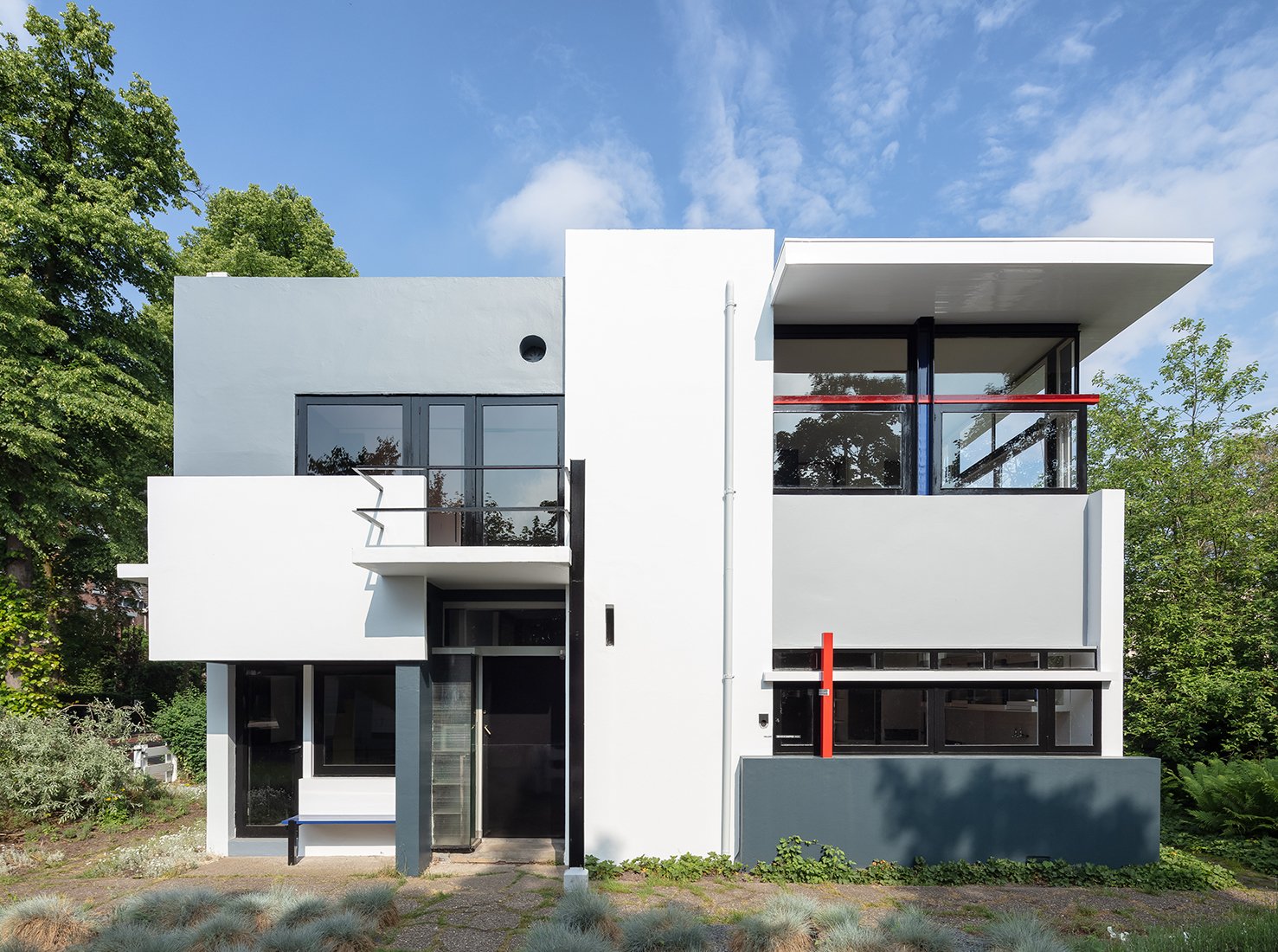#11307. Neoplasticist white facade: geometry, contrast, and red accents
Before us stands an expressive example of modernist architecture that embodies the key principles of the De Stijl movement. The snow-white facade is built on a clear geometric composition of rectangular volumes of varying heights and depths, creating a dynamic three-dimensional composition. The architect masterfully plays with the contrast of white and light-gray planes, emphasizing the structure and volume of the building.
The accent red elements deserve special attention — the horizontal stripe in the upper part of the right wing and the vertical post below, which bring a Neoplasticist character to the facade composition, reminiscent of works by Rietveld and Mondrian. Large window openings with dark frames create a rhythmic contrast with the white surfaces, and their strategic placement ensures good natural lighting for the interiors.
The overhanging elements and projecting canopies add an expressive play of light and shadow to the facade, enhancing its plastic expressiveness throughout the day. The round porthole window on the left wall introduces an unexpected counterpoint to the rectilinear geometry of the facade. The building is organically integrated into its natural surroundings, contrasting with its man-made geometry but not conflicting thanks to its neutral color palette.
When designing your own facade in this style, it's worth paying attention to the use of pure geometric forms, a well-thought-out asymmetrical composition, playing with protruding elements to create light and shadow effects, and bold color accents. It's also important to consider the ratio of glazing to solid walls to achieve a balance between privacy and connection with the environment.
